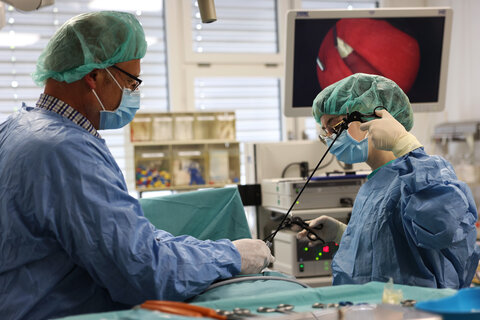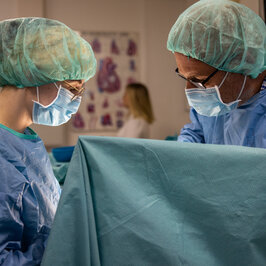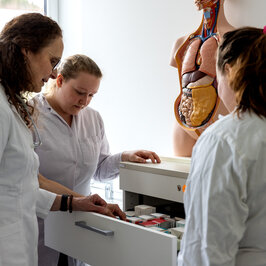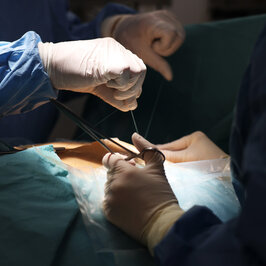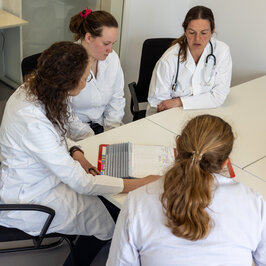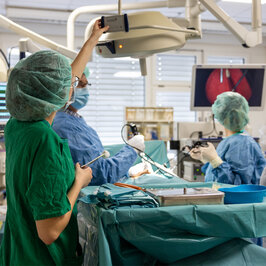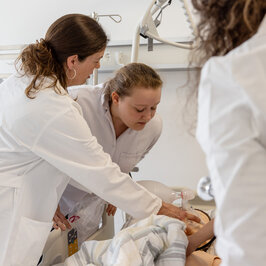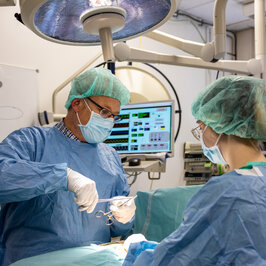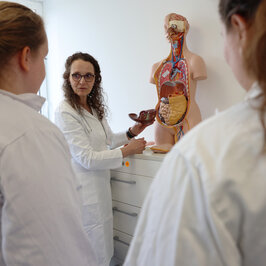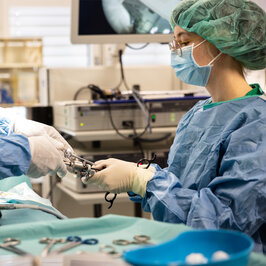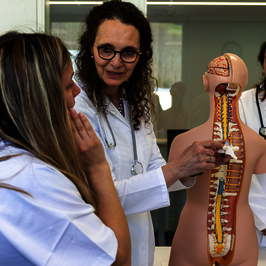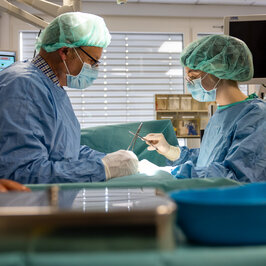Programme content and structure
Seven semesters to become a medical assistant
On the Physician Assistant programme you'll gain initial insights into the profession in subjects such as anamnesis, anatomy, physiology and rehabilitation. After that, you'll focus more and more on clinical subjects and diagnostics. You'll also be taught fundamentals of the natural sciences and get an introduction to scientific methods.
We show you how an EEG or ECG works - so that you can apply this in the third semester when you go into practice. We work together with various practice partners in the region, for example with many clinics where you can work in a wide range of specialist areas.
Of course, you will also learn about professional law and the structures of healthcare and billing systems. In the second practical semester, you can specialise further before writing your thesis in the seventh semester and graduating!
Entry requirements
Supporting documentation
Only a university entrance qualification is required.
Additional proof is required for subsequent enrollment:
- Proof of a four-week nursing internship
- Police clearance certificate (document type NE)
- Proof of the required vaccinations for the healthcare sector
- Medical certificate of medical fitness to work as a Physician Assistant
PA specifics
What's covered
Theoretical and practical content of your PA degree programme
Medical basics for patient-related activities, especially in the fields of surgery, internal medicine, central interdisciplinary emergency room, anesthesia and intensive care medicine:
- Basic natural sciences, anatomy/physiology, pathology/pathophysiology, pharmacology, microbiology/hygiene
- Clinical medicine (basics, principles, procedures), anamnesis, physical and instrumental examination, surgical teaching, functional diagnostics
Main subjects:
- Internal medicine: nephrology, cardiology, pulmonology, infectiology
- Surgery: cardiothoracic surgery, urology, ENT, ophthalmology, dermatology
- Emergency medicine/emergency management, anesthesiology
Selection of other specialties:
- Orthopaedics/trauma surgery
- geriatrics
- Pediatrics
- Psychiatry and psychosomatics
- Gynecology/obstetrics
- Neurology
General process management with the basics of law, economics, IT, quality management, medical technology in the form of lectures and seminars in the subjects:
- Public Health
- Legal aspects
- Medical technology/medical devices
- Information technology, quality management
Medical process and documentation management, such as content on patient care, compliance management, treatment planning and treatment documentation:
- Documentation, remuneration and healthcare system
- Key skills: project management, moderation techniques, presentation, conflict management, communication and discussion techniques
- Fundamentals of scientific theory and scientific methods
Special features
This study programme is not a medical degree, and no license to practice medicine is issued after graduation. As a PA, you are bound by instructions when providing medical treatment, which means that the responsibility is borne by the doctor who has assigned the treatment to you.
You do not need any prior training to apply for the Physician Assistant course. However, you must have completed a four-week internship in nursing by the end of the first semester at the latest so that you can be sure that working with patients is right for you.
Your career prospects
We only have to mention the shortage of specialists ...
As a PA, you can work in inpatient care in urban and rural areas, for example in a general medical practice or hospital.
As an assistant to the medical management in medical departments, the fields of activity range from treatment documentation to supporting interventions in emergency care. Whether in surgery or taking over patient consultations - you are always close to people in all medical specialties, with this degree you have career prospects at home and abroad! PAs are highly valued employees in the practice, allowing medical specialists to focus more on their area of specialisation.
Your key contacts
Your future is important for us. Contact us for advice.


